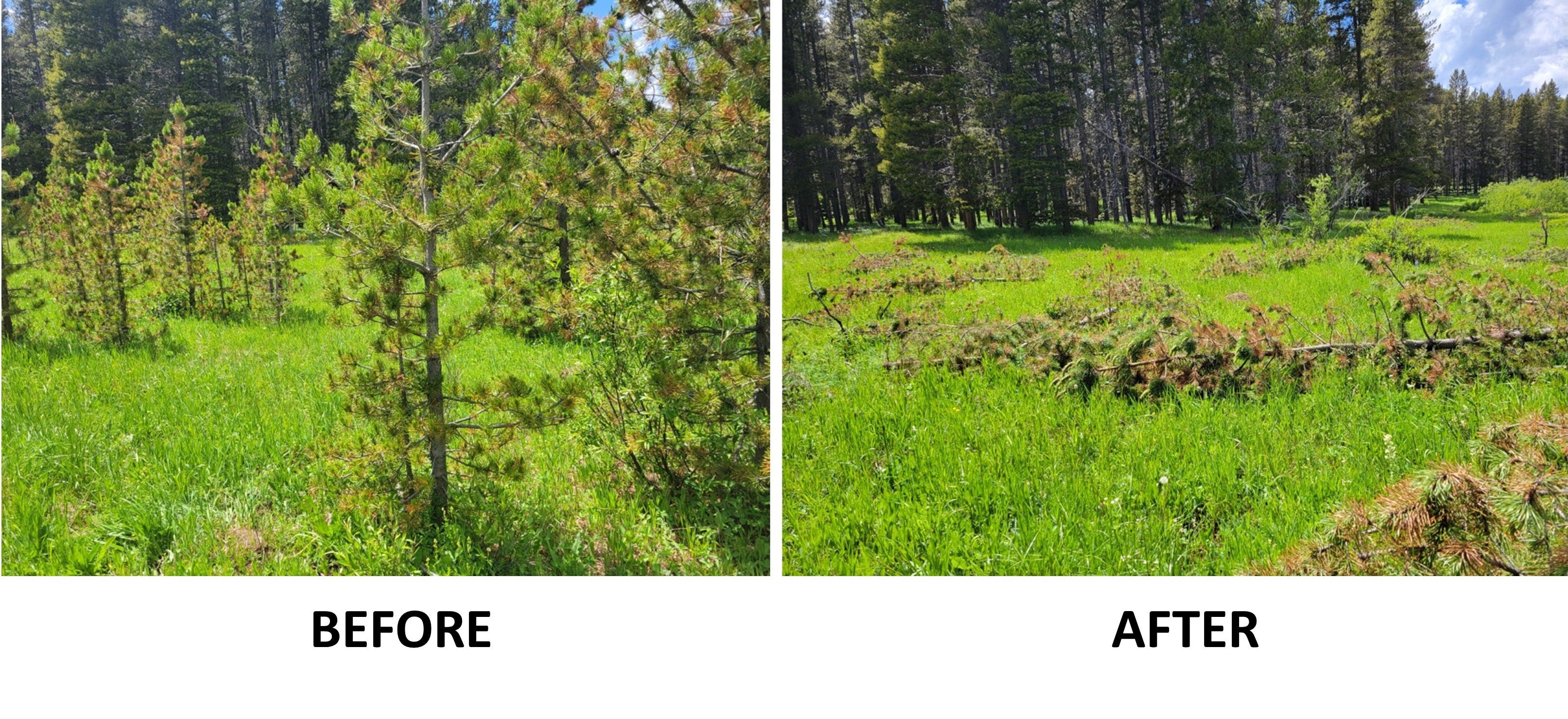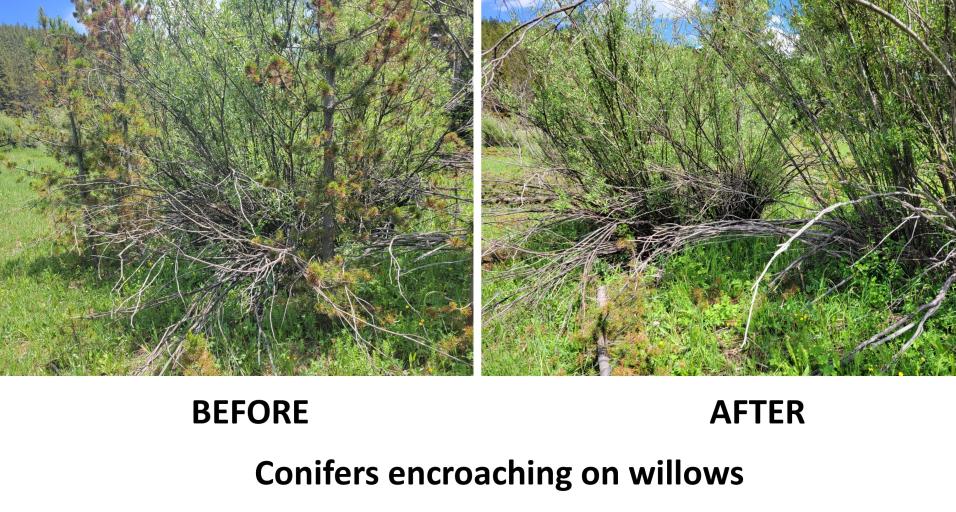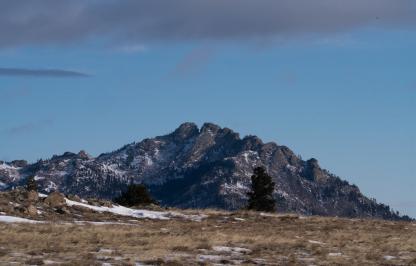The Wyoming Game and Fish Department is conducting multiple wildlife habitat improvement projects in the Bighorn Mountains in cooperation with the Bighorn National Forest. The projects will be visible to forest users in coming weeks.
The majority of the projects involve cutting encroaching coniferous (evergreen) trees to enhance riparian areas and associated wet meadows that provide high quality forage for moose and other ungulates. Other projects involve cutting conifers to enhance growth of aspen tree communities.
As the projects are completed, the cut trees are left on the ground as physical barriers to wildlife and livestock to reduce browsing pressure on new growth of willows, aspen, and other desirable vegetation.
Conifers are being removed from a total of 1,000 acres across more than two dozen sites in the northern Bighorns.
The most visible projects are taking place on various forks of Little and Big Goose creeks, along Big Goose Road from Rapid Creek to Ranger Creek and along Highway 14 from Burgess Junction to Owen Creek. Other work is taking place in more remote areas such as Big Willow Creek, Bear Gulch and others.
Funding for these projects is provided by the National Fish and Wildlife Foundation, the U.S. Forest Service and the Wyoming Wildlife and Natural Resource Trust Fund.
The projects will likely be completed at the end of July.
Riparian and wet meadow area enhancement
Riparian areas, the green ribbons of vegetation along rivers, streams and lakes, are important habitats for many wildlife species, as are wet meadows that produce important forage for ungulates such as mule deer, elk and moose. According to the most recent Wyoming State Wildlife Action Plan, riparian areas make up just over one percent of the landscape in Wyoming, with an estimated 61% of 445 terrestrial vertebrate species showing preference for riparian habitats, particularly bird species.
The important functions of wet meadows and riparian areas can be impacted by encroachment of conifers.
“As you get more conifers in the system, they compete for water, sunlight, and nutrients, outcompeting desirable riparian vegetation ” said Sheridan Region Terrestrial Habitat Biologist Todd Caltrider. “As conifer density increases in riparian areas, we see a decrease in species like willow, aspen, and herbaceous plants, which provide important forage and cover for a variety of wildlife species. Removing the trees will keep those areas productive and remove future conifer seed sources.”
Aspen enhancement
Quaking aspen is a native tree found in moist areas with ample sunlight. Aspen communities make up only one percent of vegetation in the Bighorn Mountains, but provide food and shelter for many species, improving forest diversity and wildlife habitat.
Encroachment by coniferous trees can negatively impact existing aspen stands. Removing conifers reduces competition between the species for sunlight, water and soil nutrients, allowing aspen stands to expand.
“As in wet meadows, conifers take water out of an aspen system and change the species composition of plants in the area,” said Caltrider. “As conifers expand, they increase shade and aspen, which are not adapted to low light, are impacted due to lack of sunlight.”
Aspen generally propagates through suckering, in which the tree sends up numerous rhizomes (shoots) to form large groves or clones. Felled conifers will be left in place to discourage browsing animals from the area, allowing young aspen shoots to grow and become established above an animal’s reach.
“Individual aspen trees are short-lived and if new, young sprouts can’t grow into mature trees, the entire aspen clone eventually dies,” said Caltrider. “By completing these projects, we hope to secure the long term growth and expansion of aspen colonies in several areas of the forest.”




